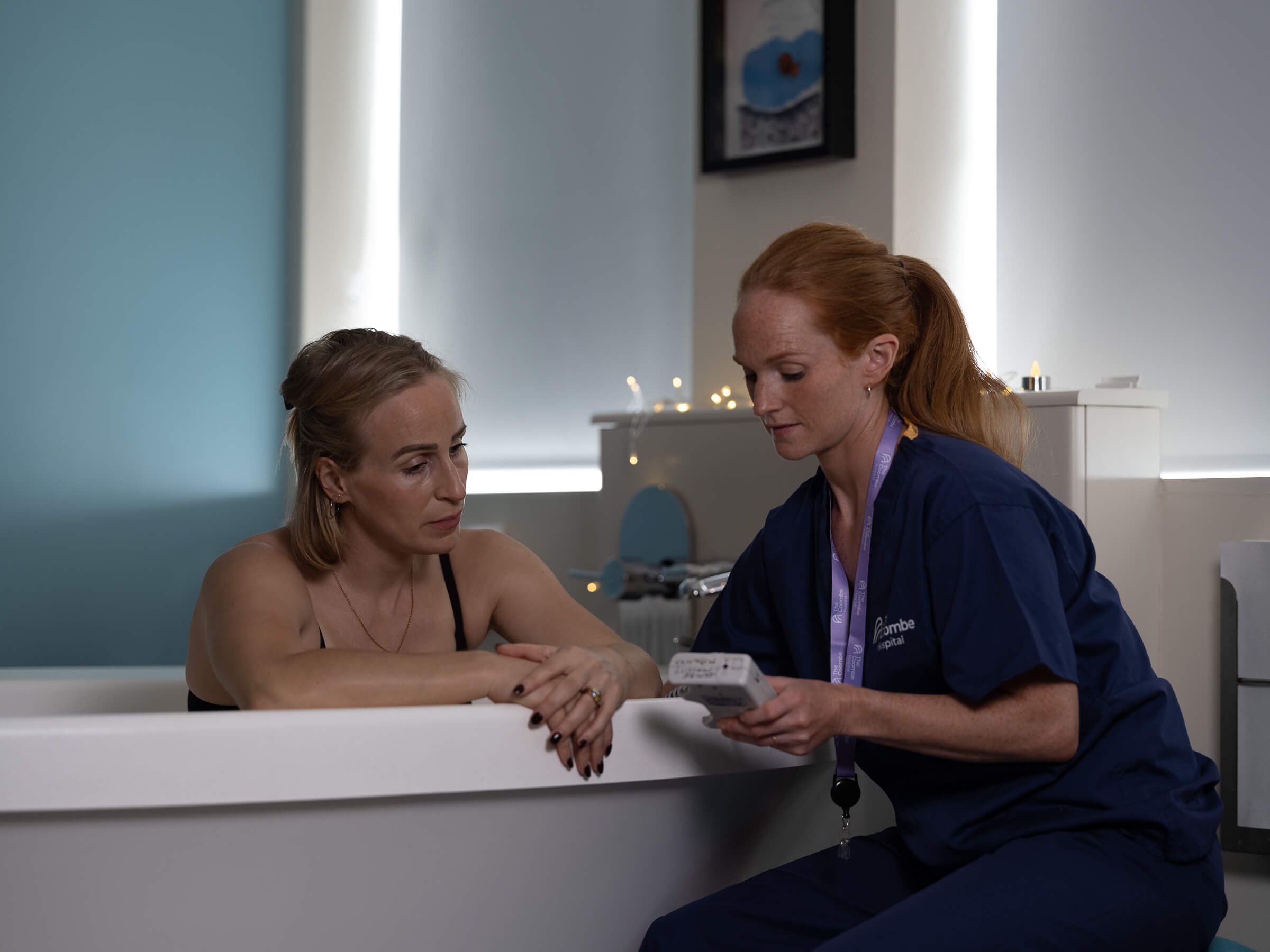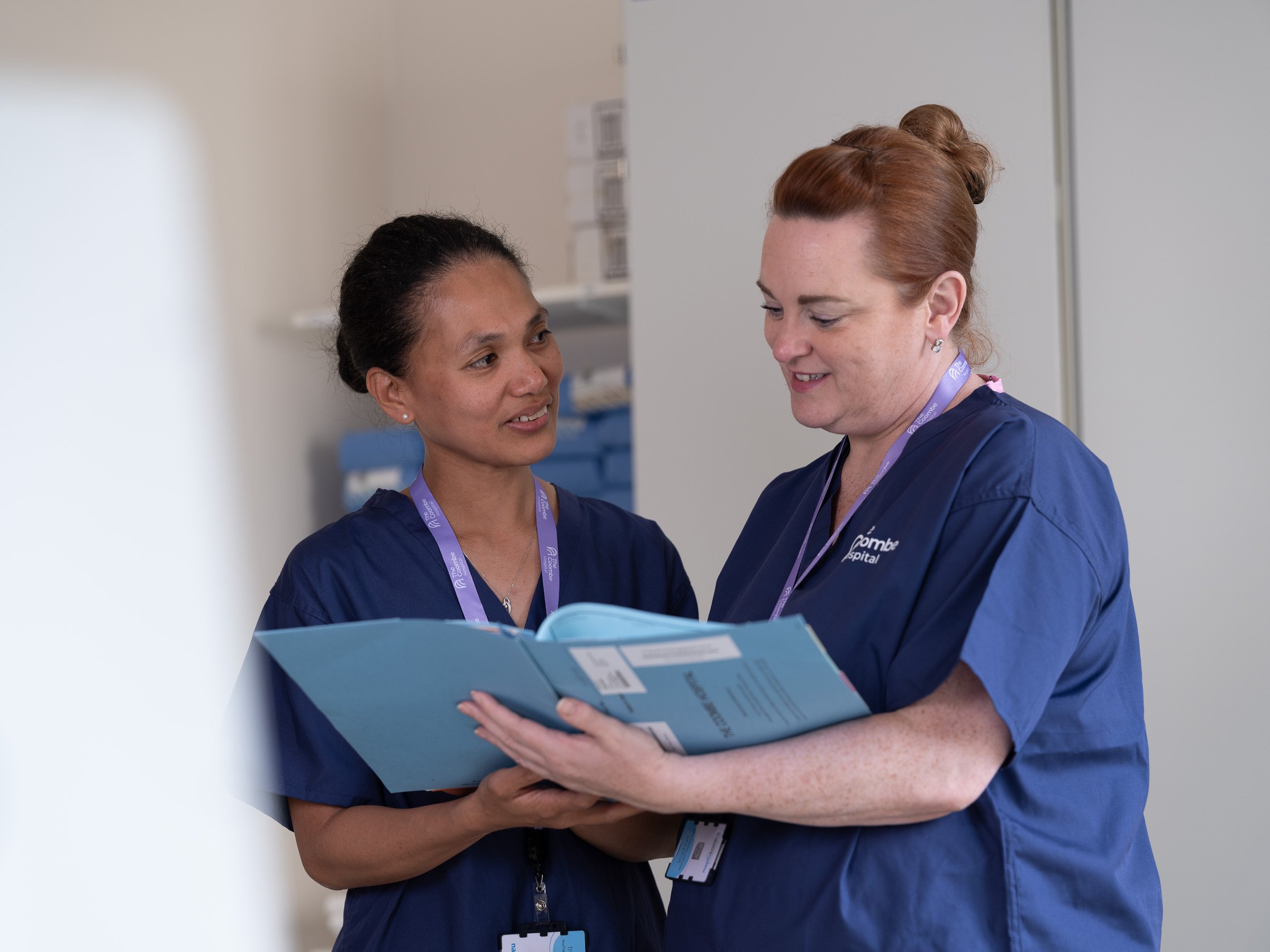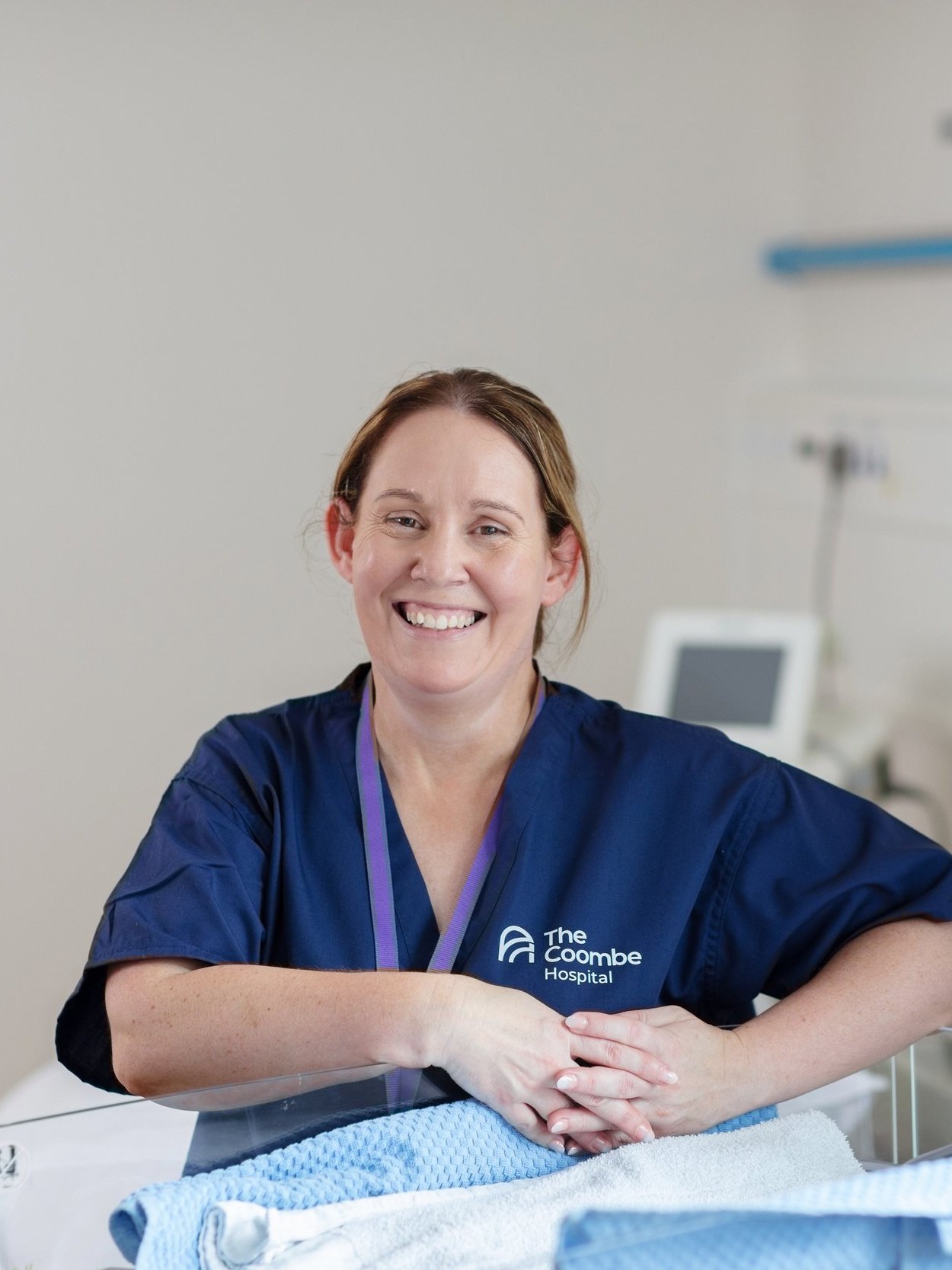

About Our Service
The use of water for labour and birth can be traced back to ancient times. At The Coombe, we offer a dedicated birthing pool suite to support women who wish to use water to aid relaxation, and as an alternative option for pain relief.
Our Birthing Pool
Is this video we discuss how we use the birthing at The Coombe, along with answering some of your most frequently asked questions!
Birthing Pool Assessment
Women are screened for risk factors in order to assess suitability for use of the birthing pool.
Similar to all births, both the mother and baby are monitored closely by the midwife while using the pool to minimise the risk to mother and baby. If your midwife has any concerns, they will explain these to you and ask you to leave the pool.
As with all births, midwives adhere to evidence based guidelines and an audit is maintained of birth outcomes. Strict cleaning and infection control protocols are in operation.
Potential Benefits/Risks
The use of birthing pools for labour/birth is thought to be as safe as ‘land birth’ for healthy women, with uncomplicated pregnancies. The Coombe birthing pool study which compared labour/birth in the pool versus ‘on land’, showed many benefits to using the pool, and these are supported by international studies.
-
Water has a relaxing quality, increasing coping abilities and reducing the need for pain-relieving drugs.
More normal vaginal birth, with less need for medical interventions.
Overall, the experience of childbirth is enhanced when women use pools.
-
Findings from our study showed higher rates of blood loss (500mls or more) for women using the pool. However, rates were similar to current Coombe rates, it is still an important finding for you to be aware of and to discuss with your midwife/doctor.
The risk of 3rd/4th-degree tears following water birth can sometimes be sited as a concern. Our study showed no difference, but due to the small size of our study, it was not possible to exclude any important clinical difference.
-
Outside of The Coombe, giving birth in water has resulted in a small number of serious incidents that do not occur out of water, such as water inhalation and near drowning. While these are extremely rare situations, it is important to know that they have occurred in order for you to make an informed choice.
Suitability Criteria
You must be healthy, with an uncomplicated pregnancy and be at term (37-42 weeks).
You must go into labour yourself, and both you and your baby are well at the onset of labour.
You must be sufficiently mobile to enable quick exit from the pool in case of emergency.
When sitting in the pool the water should cover your bump.
The pool water should be clean and comfortably warm (not warmer than 37.5°C), with no additives.
It’s important to drink/keep hydrated while using the pool.
You are encouraged to leave the pool at regular intervals (2 hourly) to use the bathroom.
FAQs
-
You must be healthy, with an uncomplicated pregnancy and be at term (37-42 weeks).
You must go into labour yourself, and both you and your baby are well at the onset of labour. E.g. your temperature, pulse and blood pressure are normal and your baby’s heartbeat is satisfactory.
You must be sufficiently mobile to enable quick exit from the pool in case of emergency.
-
Induction of labour
Multiple pregnancy (twins)
Previous Caesarean Section
Medical condition - diabetes, preeclampsia, epilepsy etc.
Signs of infection
>18 hours since waters breaking
If your waters have gone and are not clear
Previous 3rd/4th degree tear
Previous excessive blood loss
BMI >35
-
When sitting in the pool the water should cover your bump.
The pool water should be clean and comfortably warm (not warmer than 37.5°C), with no additives.
It’s important to drink/keep hydrated while using the pool.
You are encouraged to leave the pool at regular intervals (2 hourly) to use the bathroom.
-
Most women choose to bathe naked in the pool, however, you may feel more comfortable wearing a bra, bikini top or t-shirt. We advise that you pack flip flops, extra towels and a bath robe so that you do not get cold, as you may get in and out of the pool several times during your labour.
-
It is best used when you are having strong, regular contractions and your labour is progressing well. Your midwife will advise you as to the best time.
-
Whenever you feel you want to. If you feel the pool is not for you, or you request other pain relief, you may leave the pool. You may wish to get out of the pool and mobilise, eat/drink, reposition/rest to help your labour progress. Your midwife may ask you to leave the pool for different reasons – to use the bathroom, to refresh the water or if you have been in the pool for a long time. A break may offer greater benefits once you return to the pool. Your midwife will also request you to leave the pool if they feel your labour has slowed down, or there are concerns about you or your baby’s wellbeing.
-
Yes, once you and your baby remain well. In order to protect the ‘breathing reflex’ and avoid stimulating your baby to breathe while under water, it is important that your baby’s head remains totally submerged during birth. Once born, your midwife will immediately and gently bring your baby to the surface, where the change in environment from water to air, triggers the first breath. Your baby’s head is not touched during the birthing process and the water temperature is monitored closely, with the aim of creating an environment to prevent the ‘breathing reflex’ from being triggered prematurely.
-
We aim to create a private, secure, calm, and relaxed environment. We will encourage you as necessary and disturb you as little as possible. We will listen to your baby’s heartbeat, check your temperature, pulse and blood pressure regularly.
If you opt to have a water birth, to protect the ‘breathing reflex’ your midwife will remind you to keep the lower half of your body under water until your baby is born and once born, your baby is immediately brought to the surface.
If your midwife is in anyway concerned about you or your baby during labour and/or birth, you will be asked to leave the pool.
-
Many women find listening to their favourite music, massage, aromatherapy, deep breathing and/or the use of hypnobirthing techniques greatly enhance their birthing experience. Some women choose to use Entonox (gas and air), although it can cause drowsiness so it can only be used under midwifery supervision.
-
It is important that you keep hydrated; your birth partner can help to remind you to take regular fluids and a light diet to keep up your stamina. Examples of drinks include orange/apple juice or isotonic ‘sports’ drinks. Pack some snacks in your hospital bag such as cream crackers or plain biscuits.
-
Speak to your midwife or doctor about using the pool in labour.
-
Research supporting water immersion for labour and birth includes:
Garland D. Revisiting Waterbirth; An Attitude to Care. London, UK: Palgrave 2017
Vanderlaan, J et al. Neonatal outcomes with water birth: A systematic review and meta-analysis. Midwifery 2017
Choose The Right Care For You
Our clinics offer tailored care for every stage of a woman’s life, from family planning and maternity to menopause and beyond. Whether you choose Public, Semi Private, or Private Services, we are here to provide expert, compassionate care that supports your health and wellbeing every step of the way.
Public Clinic
If you are living and working in Ireland and have the PRSI contributions or you have a medical card you can access free maternity and newborn care.
Semi Private Clinic
The Semi Private Clinic is a fee based option. Most women who choose this clinic use private health insurance to cover costs.
Private Clinic
There are a number of consultant obstetricians offering services through our Private Clinic. Antenatal care fees vary between consultants.
Patient Experience
Every patient’s path to diagnosis and treatment is individual. No matter your specific journey, we believe in empowering you to take an active role in your healthcare.

Departments & Services

Help & Support
-
Appointments:
All appointments can be directed through Hospital reception: 01 408 5200, 24 hours a day -
Health Insurance:
We operate a direct payment scheme with VHI, Laya Healthcare, Irish Life Health, Garda Medical Aid, ESB, Medical Provident Fund, and Prison Officers Medical Aid. If you are covered by any of these insurers, the relevant insurance forms are signed electronically on your admission to hospital.
Fees:
For more information on Fees - visit our Hospital Charges page -
-
The Resource Page:
Browse our collection of patient resources, brochures, and information leaflets—all in one place. Downloadable and easy to access, these documents cover everything from appointments and procedures to maternity, newborn care, and more.
Contact Us
Tel: 01 408 5200
Find Us
The Coombe Hospital
Switchboard:
Location:
Cork St, Dublin, D08 XW7X






















































